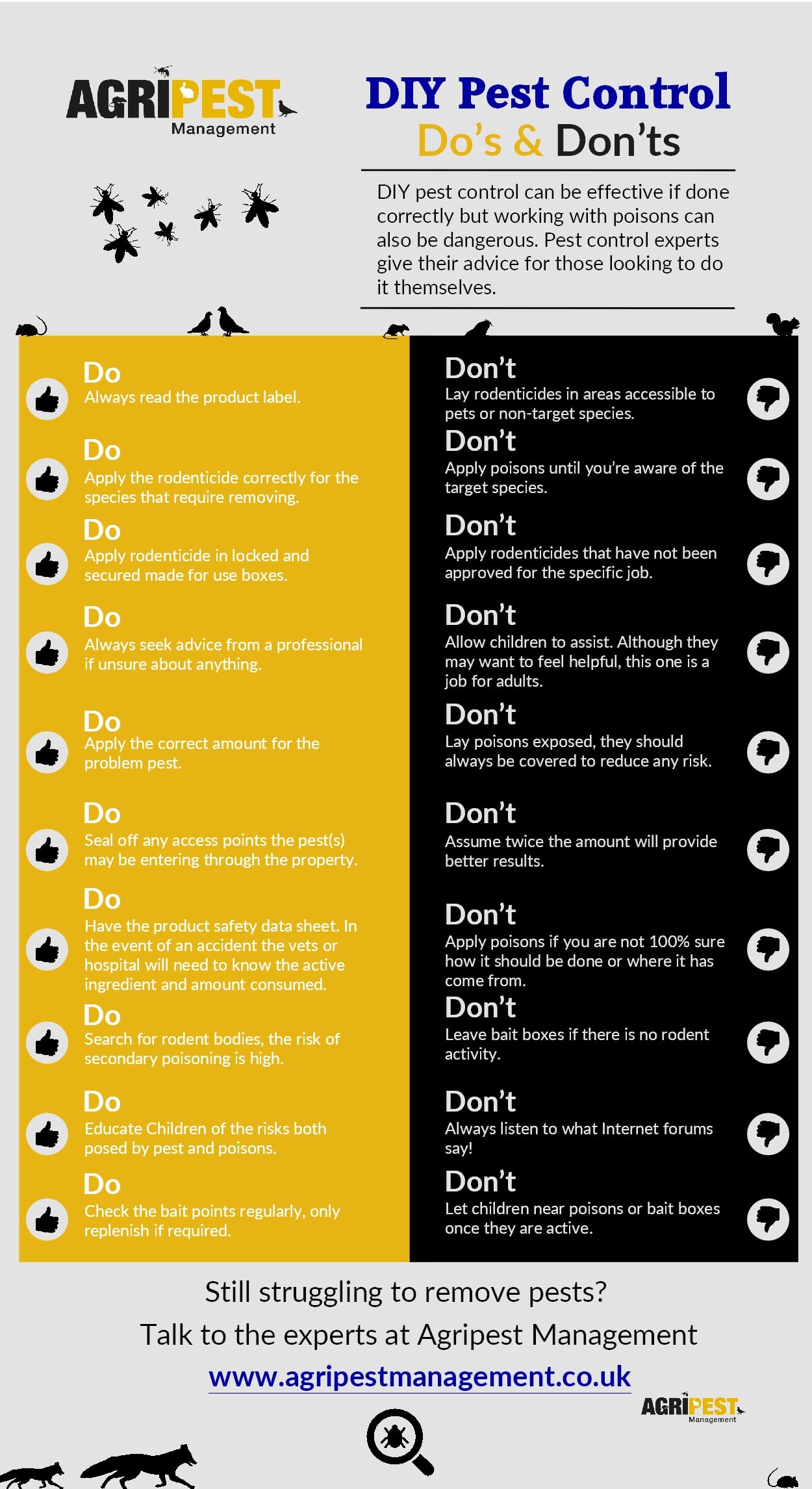Introducing The Techniques Used By Pest Control Specialists Beyond The Use Of Sprays
Introducing The Techniques Used By Pest Control Specialists Beyond The Use Of Sprays
Blog Article
Material By-Andrews Paaske
Are you tired of depending entirely on sprays to manage insects in your home or workplace? While sprays can work, pest control experts have established sophisticated methods that surpass simply splashing chemicals.
These techniques not only supply much more efficient and resilient solutions, however also concentrate on decreasing the use of hazardous chemicals. By checking out these advanced techniques, you will discover an entire brand-new globe of bug control techniques that are not just reliable, but additionally eco-friendly.
So, are you prepared to take your bug control video game to the following degree?
Integrated Bug Management (IPM)
If you're looking for a reliable and environmentally-friendly technique to pest control, Integrated Pest Management (IPM) is the option you need. IPM focuses on lasting prevention and monitoring of bugs, as opposed to simply relying upon chemicals. This method thinks about the specific demands and habits of parasites, in addition to the surrounding environment.
By using a mix of strategies such as organic control, environment manipulation, and targeted pesticide usage, IPM aims to minimize the dependence on chemical therapies and reduce injury to non-target organisms.
One key element of IPM is keeping an eye on and identifying bugs accurately. This involves routinely inspecting and evaluating the pest populace, in addition to determining the details types present. By recognizing the biology and habits of parasites, pest control specialists can create targeted techniques to interrupt their life cycle and lower their numbers.
http://entomologytoday.org/2018/01/29/brown-recluse-pest-management-tips-for-the-spider-thats-not-as-common-as-you-think/ of IPM is utilizing non-chemical control approaches whenever feasible. This can include physical barriers, such as mounting displays or securing cracks and holes, to avoid bugs from getting in structures. Additionally, cultural methods, like proper hygiene and waste administration, can help eliminate pest food sources and breeding grounds.
When chemicals are essential, IPM focuses on using them sensibly and as a last resort. This indicates selecting the least hazardous and most effective option, using it specifically and only to influenced areas, and following all security standards. By minimizing chemical use, IPM lowers the potential risks to human health and wellness and the environment.
Biological Control
To additionally improve the efficiency of Integrated Pest Administration (IPM), the next subtopic we'll explore is the approach of biological control. This strategy makes use of natural predators or bloodsuckers to manage bugs.
Below are 4 vital elements of biological control:.
1. Intro of all-natural opponents: In this approach, useful insects or microorganisms are presented to the location ravaged with bugs. These all-natural adversaries take advantage of the parasites, helping to lower their population.
2. Conservation of natural enemies: Rather than introducing brand-new organisms, this approach focuses on creating an appropriate environment for existing helpful insects. This can be attained with providing food, shelter, and water sources.
3. Augmentation: Below, the number of all-natural adversaries is boosted unnaturally by breeding and launching them right into the plagued location. This helps to rapidly decrease the pest populace.
4. Push-pull approach: This technique integrates repellents and attractants to adjust the behavior of insects. Repellents press insects far from crops, while attractants tempt them in the direction of catch crops or locations where they can be conveniently controlled.
Environment Adjustment
Environment modification plays an important function in bug control by changing the atmosphere to inhibit pest problems. By making changes to the physical characteristics of a space, you can create an unwelcoming environment for pests, making it harder for them to make it through and prosper.
One usual method of habitat alteration is removing or decreasing possible food sources for pests. This can consist of appropriate waste monitoring, sealing containers, and tidying up food crumbs.
In addition, eliminating or minimizing areas of standing water can assist regulate pests like insects.
Transforming the landscape by cutting trees and hedges far from buildings can likewise avoid insects from accessing your residential property.
Conclusion.
So there you have it - the advanced techniques utilized by insect control experts exceed just splashing chemicals. Integrated Bug Management (IPM) integrates various techniques to properly control parasites, while organic control utilizes natural enemies to maintain insect populations in check.
Habitat adjustment also plays a crucial function in avoiding bug infestations.
Did you know that according to a study, applying IPM techniques lowered chemical use by approximately 71%? This not just secures our health and wellness and the setting but additionally conserves money in the long run.
